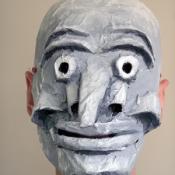 Transpersonal therapy can be a powerful framework for using the expressive arts, such as music, drama, and visual art. But many people are unfamiliar with transpersonal therapy. You may be wondering what this term means and how it relates to expressive arts processes. Here’s what you need to know about transpersonal psychology and how it connects with expressive therapies.
Transpersonal therapy can be a powerful framework for using the expressive arts, such as music, drama, and visual art. But many people are unfamiliar with transpersonal therapy. You may be wondering what this term means and how it relates to expressive arts processes. Here’s what you need to know about transpersonal psychology and how it connects with expressive therapies.
What Is Transpersonal Therapy?
You have probably heard of the so-called “three forces of psychology”: behavioral, psychoanalytic, and humanistic. The classic examples that come to mind are Pavlov and his dog (behavioral); Freud’s dream interpretations (psychoanalytic); and Carl Rogers’ use of “unconditional positive regard” (humanistic). These examples are the stereotype of each of these psychological orientations. In truth, most therapists these days are influenced by more than one of the “three forces.”
And now, introducing transpersonal therapy (circa 1960s)—the fourth wave of psychology. The word “transpersonal” literally means “beyond the personal”—what Ken Wilber has described as “personal plus.” That is, it includes all of the personal and individual aspects of our experience, including our thoughts, physical sensations, and emotions, but it also moves beyond this personal framework to address our spiritual experience. Naropa University’s transpersonal counseling program clarifies this by including “mystical or religious experiences, intuition, different states of consciousness, creativity, and contemplative practice.”
Transpersonal psychology is also unique in its focus on wellness rather than pathology. A key idea in transpersonal therapy is the belief that all humans, under the right circumstances, will move naturally toward a state of wellness and wholeness. The role of the therapist is to guide the individual in this move toward wholeness by acting as a facilitator and not an expert.
Expressive Arts in Transpersonal Therapy
The expressive arts and transpersonal therapy make a great team because they are both focused on exploring a wider range of possibility outside traditional talk therapy. Expressive arts therapies can include:
- Art therapy
- Movement or dance therapy
- Drama therapy or psychodrama
- Music therapy
- Sand tray therapy
- Journaling or poetry therapy
Your specific experience in doing expressive arts with a transpersonal therapist will vary depending on your own creative interests, the therapist’s background and training, and the problems for which you are seeking help. In some cases, one expressive process might blend with another. For example, you might sculpt and paint a series of masks showing the different aspects of your personality, then create a skit in which you use the masks to act out a scene. You might then also write a journal entry or poem describing your experience of producing the skit. All of these actions would be undertaken with the guidance and support of your therapist. And, of course, any creative processes that you engage within transpersonal therapy will be handled with care by your therapist. Your therapist will assist you in exploring the emotional, intellectual, and spiritual meanings that you find in these processes.
In many instances, your therapist may encourage you to engage in imaginal processes. This term refers to an ability to relate to your own artwork, music, or writing as if it is a messenger. For example, using an imaginal process with visual art might mean that after you’ve painted a dragon-like creature, your therapist will help you to create a dramatic or written dialogue in which the dragon itself is given a voice.
Another common technique in transpersonal expressive therapies is to explore archetypes, evocative symbols that are found throughout human history. Some basic archetypes include the magician, the wise old woman, the hero, and the trickster. These symbols and their relationship to your own situation can be explored with various expressive arts practices such as journaling, visual art, drama, or sand tray therapy.
While some of you might prefer a more direct approach that is planned and structured with clear homework assignments, such as cognitive behavioral therapy, others might prefer the looseness of a more organic process that lends itself to the transpersonal realm. If you are lucky, you might even find a therapist who is skilled at applying an eclectic approach, combining different therapies for a dynamic outcome.

The preceding article was solely written by the author named above. Any views and opinions expressed are not necessarily shared by GoodTherapy.org. Questions or concerns about the preceding article can be directed to the author or posted as a comment below.


 The Benefits of Mask Making in a Journey toward Wholeness
The Benefits of Mask Making in a Journey toward Wholeness Expressive Arts Therapies for New Moms
Expressive Arts Therapies for New Moms Creative Healing: Frequently Asked Questions about How Art Therapy Works
Creative Healing: Frequently Asked Questions about How Art Therapy Works

Please fill out all required fields to submit your message.
Invalid Email Address.
Please confirm that you are human.
Leave a Comment
By commenting you acknowledge acceptance of GoodTherapy.org's Terms and Conditions of Use.